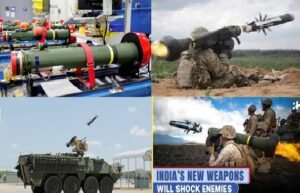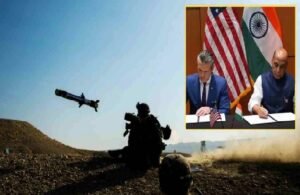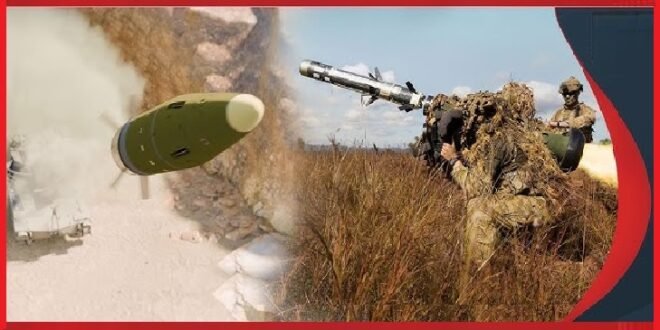22-11-2025
NEW DELHI: The US State Department has approved the sale of Javelin anti-tank missile system and Excalibur guided artillery munitions worth $93 million to India, the US Defense Security Cooperation Agency (DSCA) said on Wednesday.
 The purchase of US defence equipment is India’s first under Washington’s foreign military sales program since ties soured in August after President Donald Trump doubled tariffs on Indian goods to 50% as punishment for New Delhi’s purchases of Russian oil.
The purchase of US defence equipment is India’s first under Washington’s foreign military sales program since ties soured in August after President Donald Trump doubled tariffs on Indian goods to 50% as punishment for New Delhi’s purchases of Russian oil.
It follows a re-order this month of fighter jet engines made by General Electric to power more of India’s home-produced Tejas combat aircraft.
“This proposed sale will support the foreign policy and national security objectives of the United States by helping to strengthen the US-Indian strategic relationship and to improve the security of a major defense partner which continues to be an important force for political stability, peace, and economic progress in the Indo-Pacific and South Asia regions,” the DSCA said in a statement.
The Indian government had requested to buy up to 216 Excalibur tactical projectiles and 100 units of the Javelin system, the DSCA said. India already uses the Excalibur artillery ammunition in its M-777 Howitzer guns.
The principal contractors for the sales will be RTX Corp, opens new tab for the Excalibur projectiles and its joint venture with Lockheed Martin, opens new tab for the Javelin systems, the DSCA said.
On 3 June 2015, the then US Defense Secretary Ashton Carter and his Indian counterpart, Manohar Parrikar signed a strategically significant Ten-Year Defense Framework Agreement, in New Delhi. Now again on 31 October 25, Indian Defense Minister and US Defense Secretary singed defense pact titled “Framework for the US- India Major Defense Partnership,” during ASEAN summit. This was not a surprising moment for many as past 20 years efforts mark the defense ties between US and India. Both the signatories praised the agreement. Hegseth defined it online as “a cornerstone for regional stability and deterrence” and told media that “It’s a significant step for our two militaries, a roadmap for deeper and even more meaningful collaboration ahead.” Singh glorified the “fruitful meeting” and stated that the agreement “will usher in a new era” in India-US defense ties. Singh further added that it reflects a “growing strategic convergence” among the two states and is critical for the Indo-Pacific region.
India Major Defense Partnership,” during ASEAN summit. This was not a surprising moment for many as past 20 years efforts mark the defense ties between US and India. Both the signatories praised the agreement. Hegseth defined it online as “a cornerstone for regional stability and deterrence” and told media that “It’s a significant step for our two militaries, a roadmap for deeper and even more meaningful collaboration ahead.” Singh glorified the “fruitful meeting” and stated that the agreement “will usher in a new era” in India-US defense ties. Singh further added that it reflects a “growing strategic convergence” among the two states and is critical for the Indo-Pacific region.
There has been ups and downs in US-India relations. During the cold war period, notwithstanding India’s stated policy of non-alignment, as a responsible democratic state, it collaborated with the US at critical occasions while remained dependent on the former USSR for its defense requirements. Korean War (1950-53) was the first event to reveal India-US defense cooperation. India warned the US of likely Chinese involvement into the conflict and cautioned US troops about the possible threat. In 1962 outbreak of India-China war, the US was ready to provide air support against the Chinese. Though before major war vessels were set to sail from the US coasts, ceasefire was declared. US also sanctioned US 500 Mn military aid for India in the backdrop of the Indo-China war.
Pokhran nuclear test by India in 1974, created rift between US and India which was partially restored in 1978 through Delhi Declaration. In 1980 arms trade talks renewed between the two states and in 1984 signed MoU on sensitive technology transfers. In 1998 US imposed sanctions on India in the aftermath of Pokhran-II tests. From 2001 to 2004 relations between the two states improved on fast track as a result of 9/11 and attack on Indian Parliament.
In 2005 Civil Nuclear Deal was a defining moment in US-India relations.
 Pressmediaofindia
Pressmediaofindia




